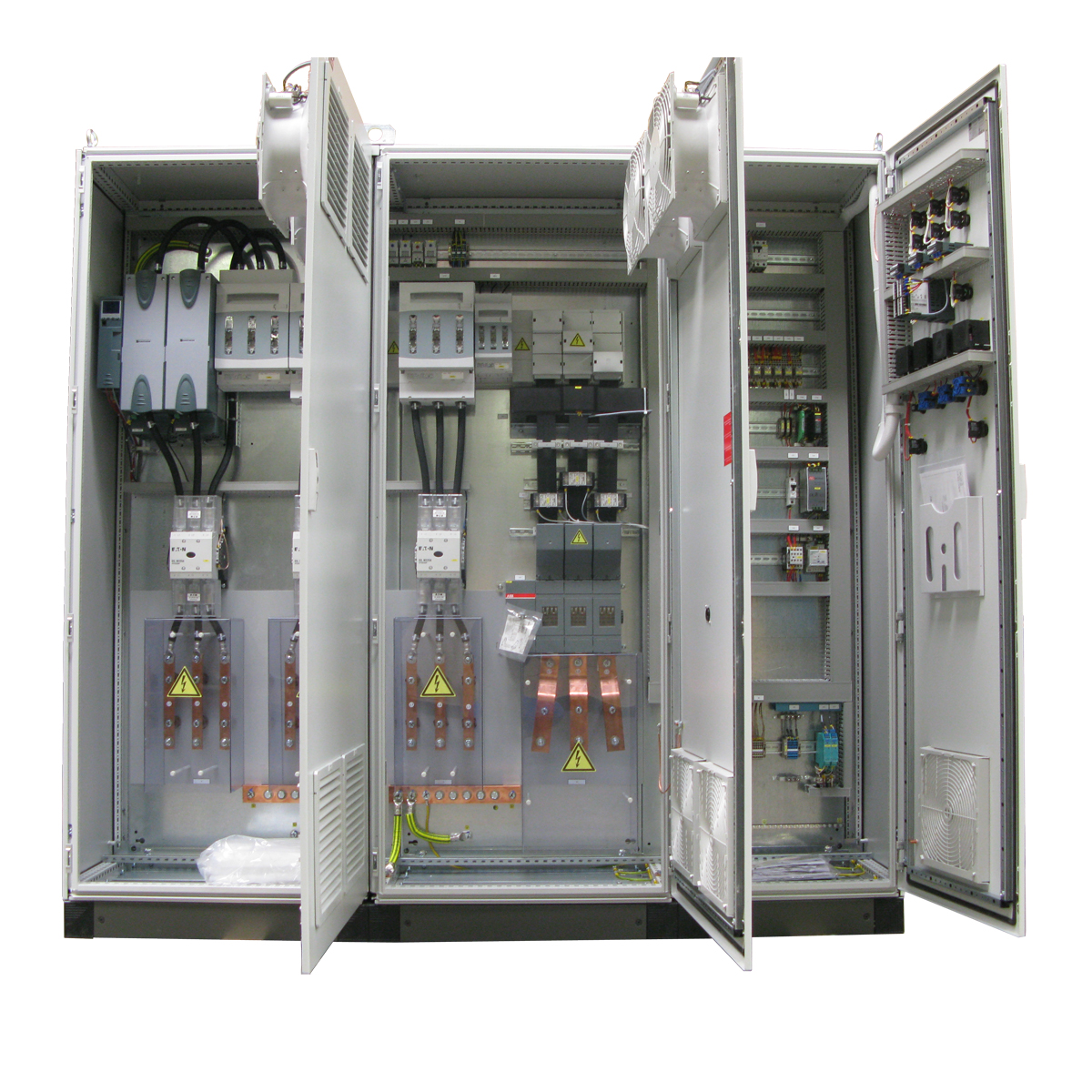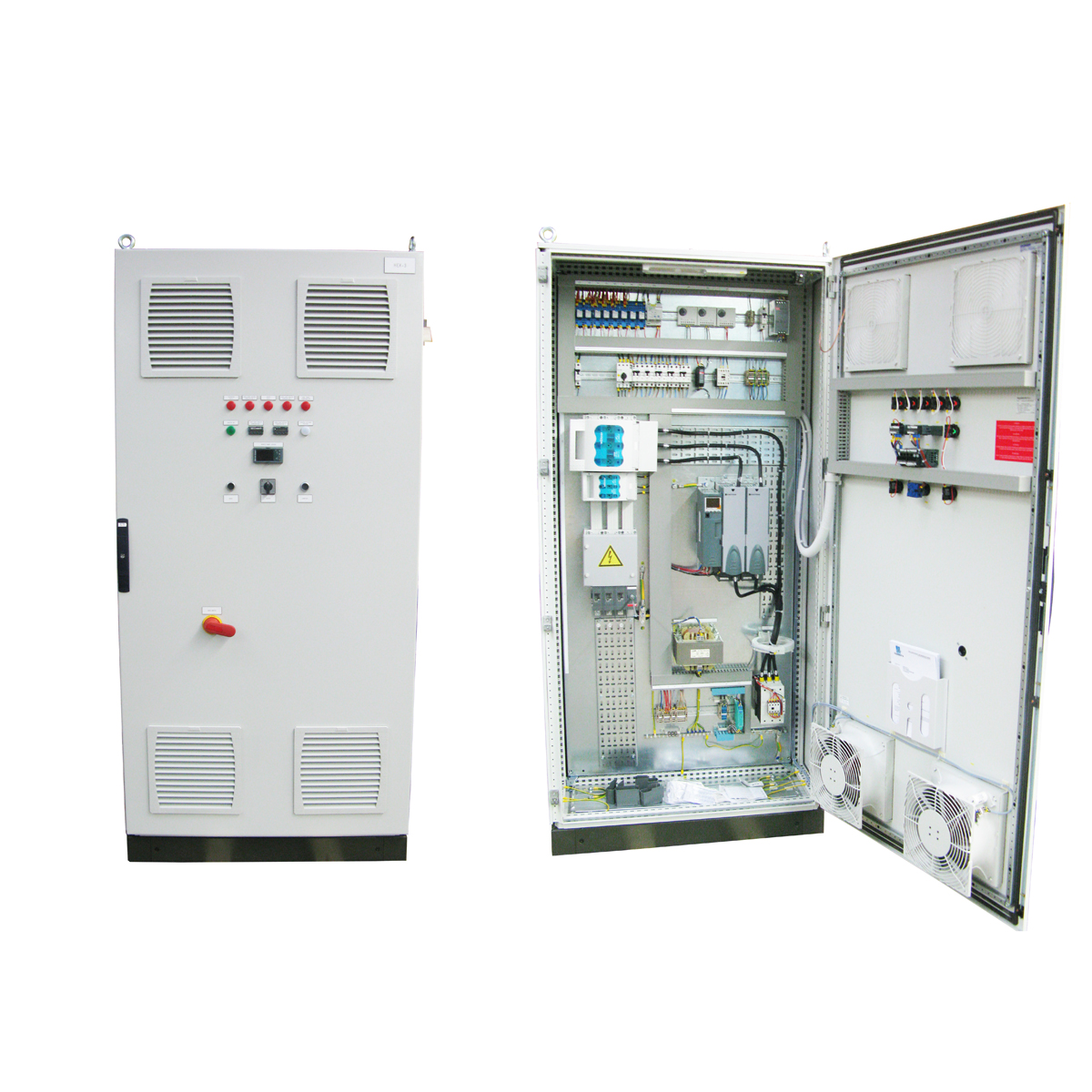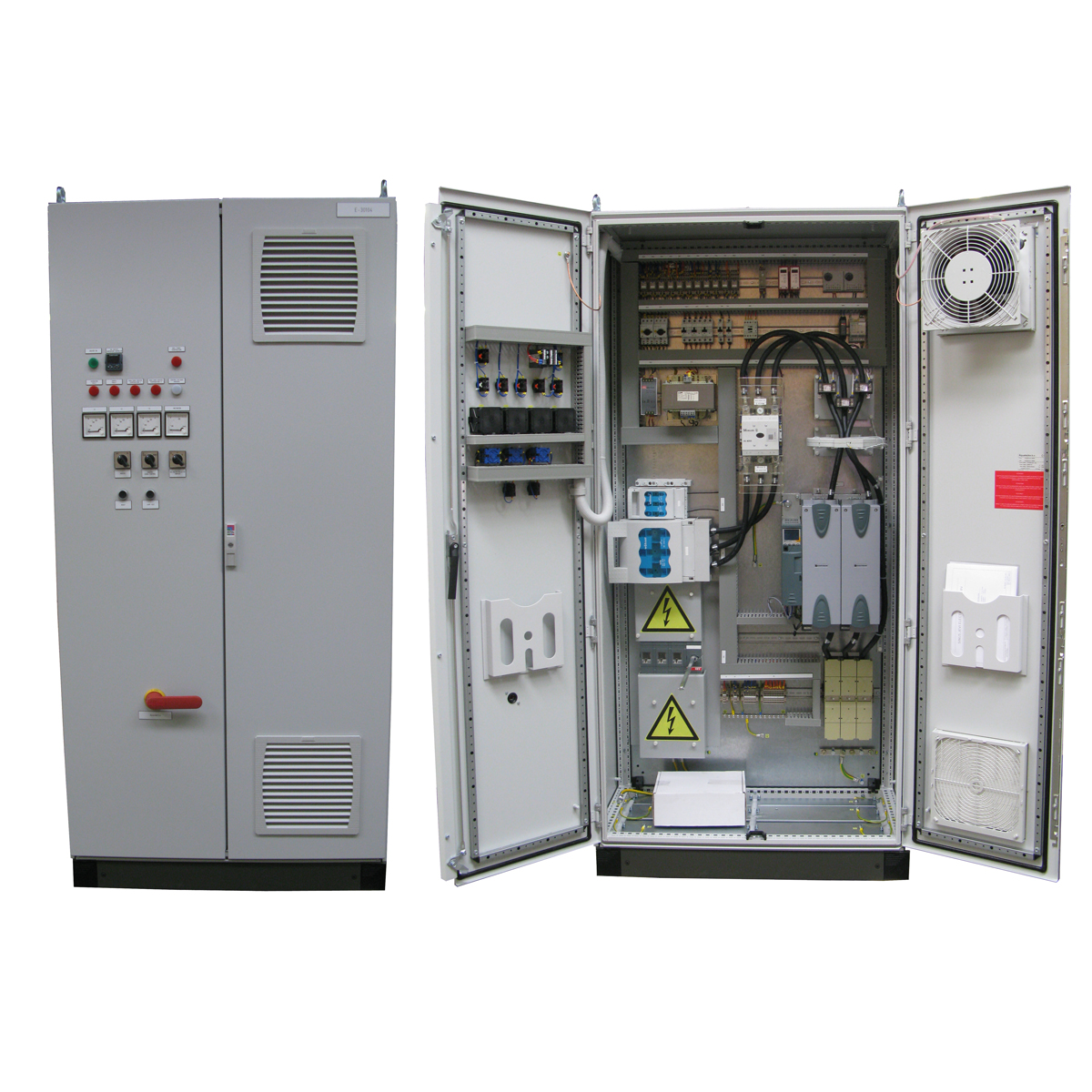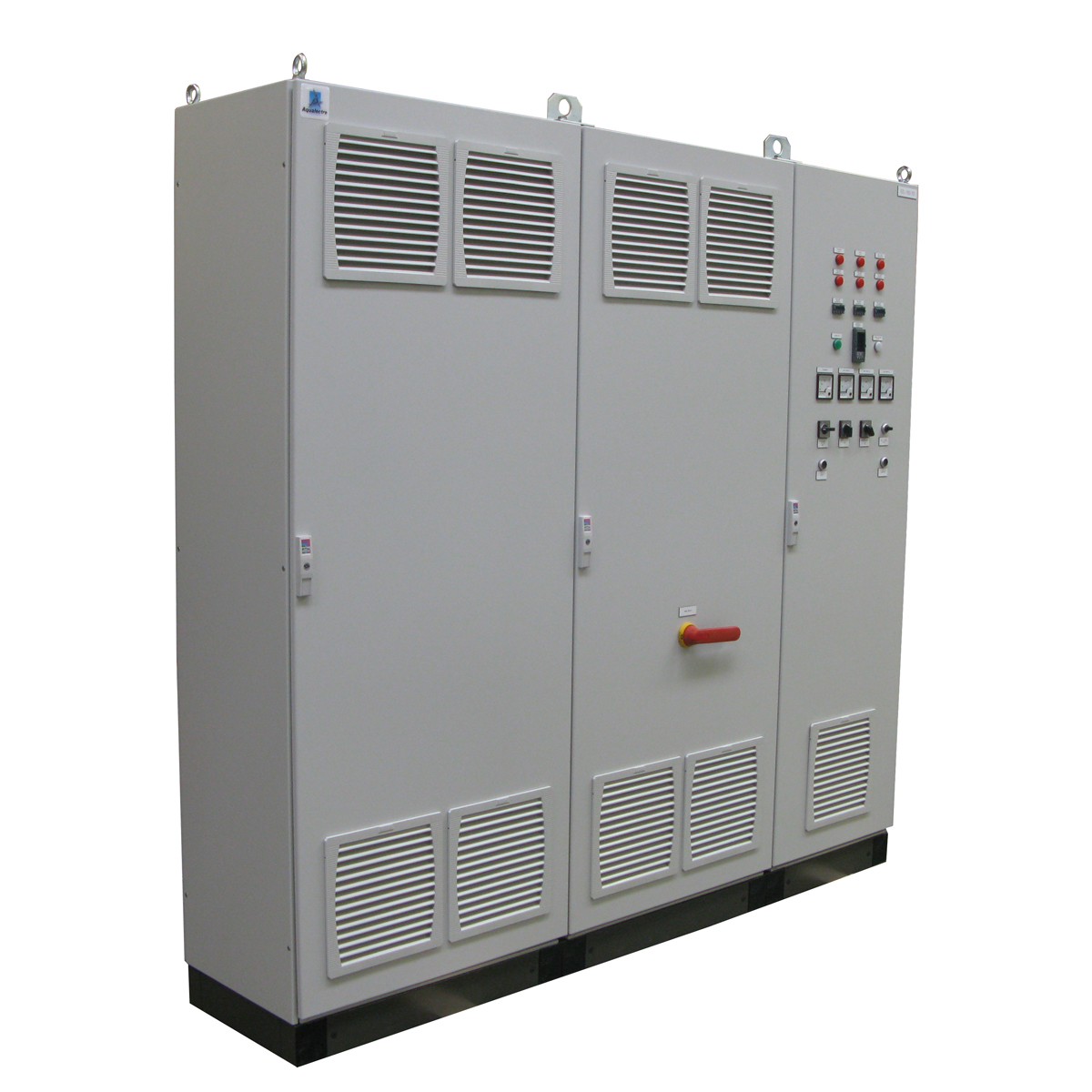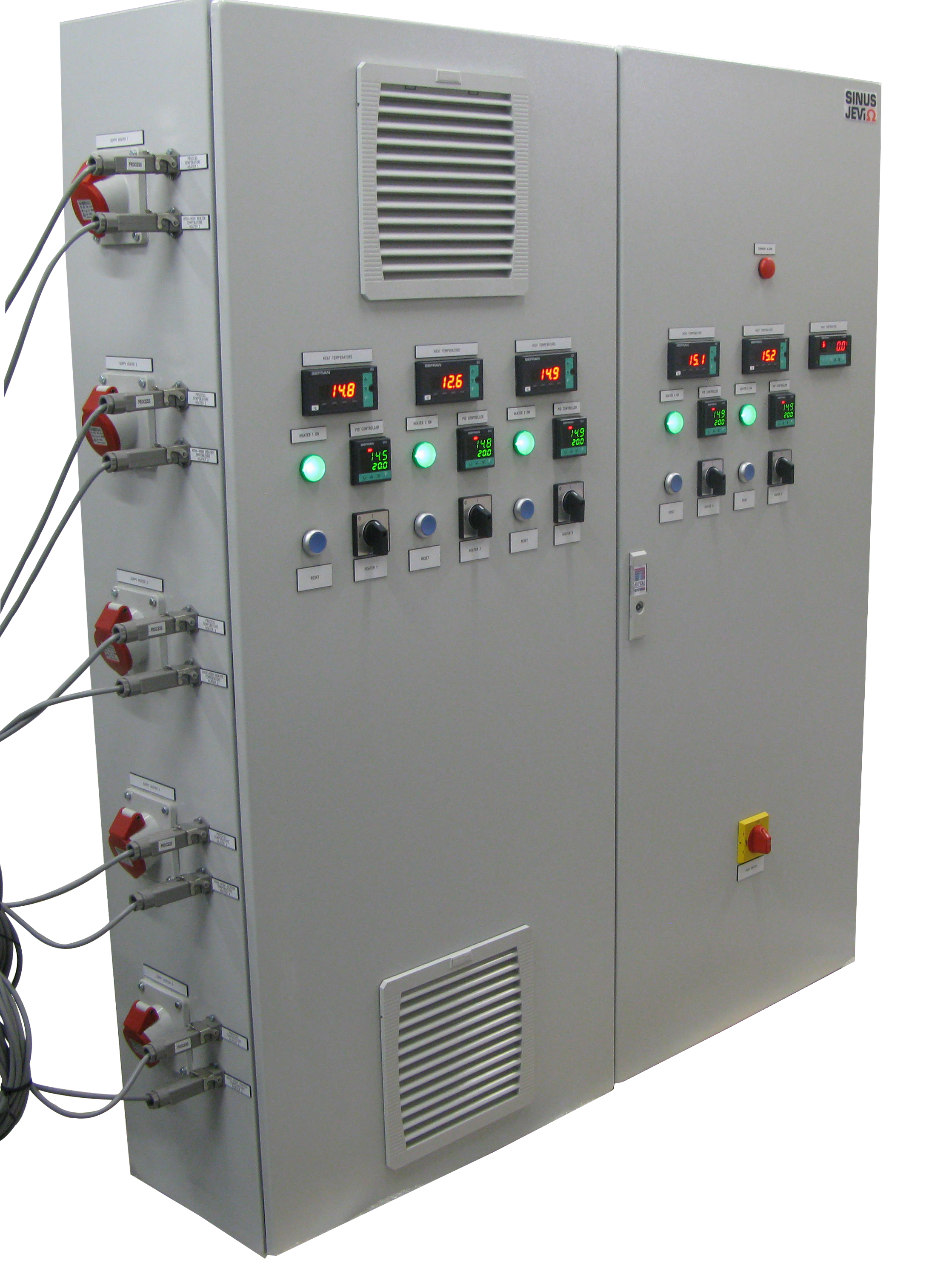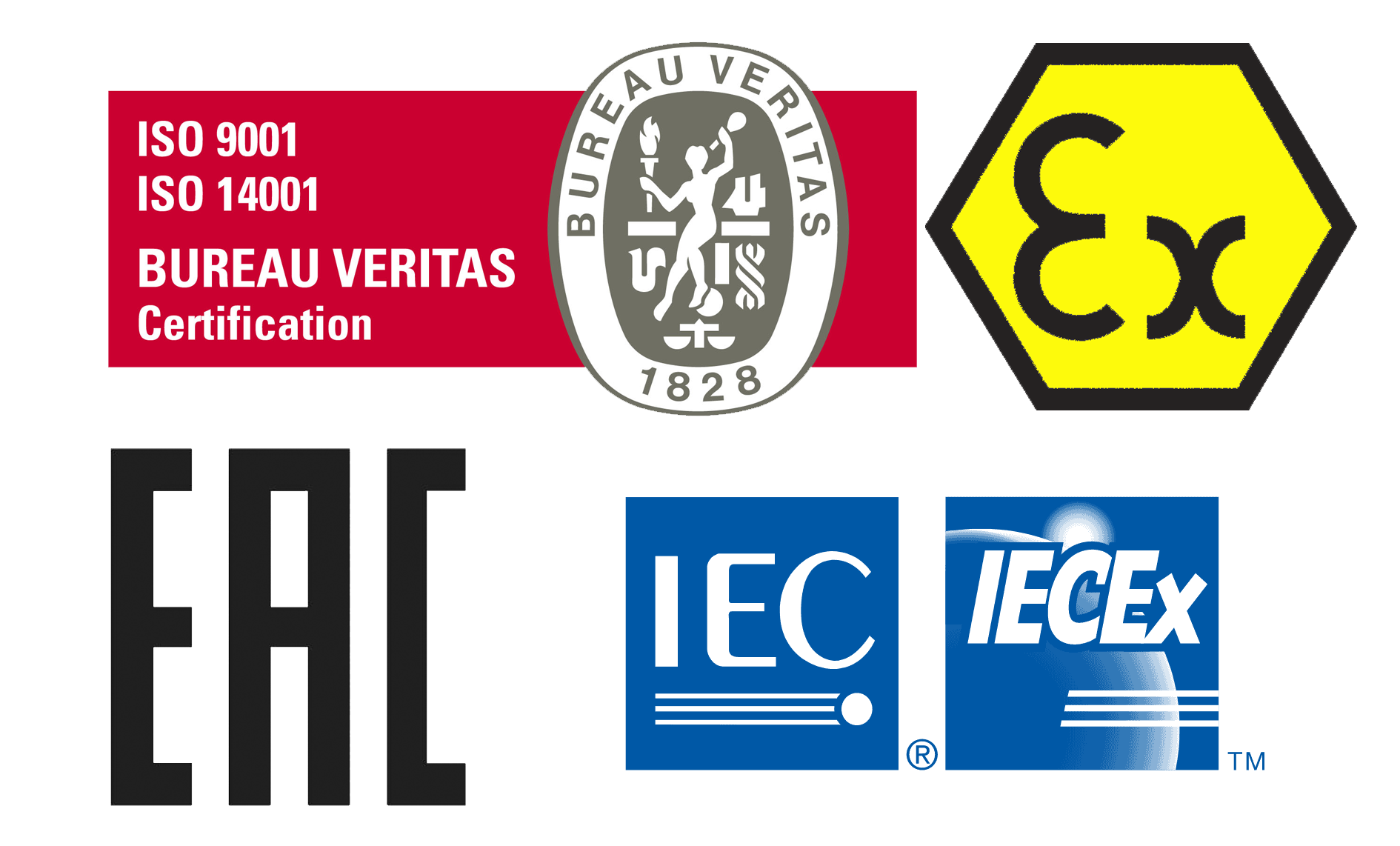Thyristor Control Panels
Most heating units are supplied by us together with a total control system. To ensure complete compatibility and optimal design the complete manufacturing of both heating unit and control system is preferable. The efficiency of each heating system depends on the ability to control it accurately. Therefore, we have developed large expertise in offering the best solution for controlling each heating system application. A full range of control systems is available for hazardous areas utilising Ex d, Ex de and Ex p types of protection.
On-Off Control
For applications where accurate control is not essential the on-off control is suitable. On-off control switches the entire heater load either on or off. The control devices can be thermostats or for slightly improved accuracy electronic controllers with a resistance thermometer PT100 or thermocouple as sensor. For loads above the switching capacity of thermostats or controller the load is switched via a contactor.
Step Control
For more accurate control than on-off and for controlling high load heating systems step controlling is advisable. The heater load is divided into a number of steps. Each step is switched by a separate contactor. Depending on the temperature difference between set-point and process temperature the step controller selects the number of steps to be switched on.
Thyristor Control
For high accuracy of control thyristor units are used.
Phase Angle Control
Each thyristor is triggered once in every half cycle of the AC supply conducting ceasing at the end of the half circle as the current falls to zero. In this way the supply wave form is chopped resulting in a reduction on the RMS output of the thyristor stack. Phase-Angle fired thyristors give smooth, stepless control of the applied voltage, they are very suitable for heating elements with a large resistance difference between cold and operating temperature.
Time Based Zero Voltage Switching
The thyristors are triggered at the beginning of a mains cycle and remain conductive for one or more complete cycles before being switched off for one or more cycles. This operation is continuously repeated thus limiting the average power input to the elements. Slow cycle thyristors generally have cycle times of several seconds and are not suitable for direct control of heaters with a great difference of the resistance between cold and operating temperature.
Cycle Base Zero Voltage Switching
The optimum type of burst-fired thyristors is the single-cycle burst-firing type where the average power input is always reached over the minimum possible number of complete cycles (i.e. 50% power = cycle »on« + 1 cycle »of«). Resistive loads controlled by fast-cycle thyristors have a unity power factor and as only full mains cycles are delivered to the load there is no cumulative distortion of the mains supply. With heavy loads however, voltage drop may cause flickering lights and also affect sensitive equipment.
Combination of Thyristor Units
For very large loads or when the heater represents a significant proportion of the power generation capacity, the heater load is divided into a number of small units each controlled by its own thyristor. A synchronising card control ensures that each thyristor is turned on and off consecutively during the set time period. There are no peak loads generated by a simultaneous controller action and load valeys are evened out.
Please contact our technical department for detailed information.


